After Switzerland declared its independence from Rome, they knew it wouldn’t be long until war found its way to their doorstep.
That war came in 1315, when the Duke of Austria, Leopold I, sent his army to compel the Swiss to fall back under the domain of Rome.
He never expected a battle.
The Birth of the Pikemen
When Leopold’s men arrived, they were met by thousands of angry Swiss with little more than pikes to defend their country.
The fact that a fighting force had even shown up at all was surprising enough to the Austrians. But what happened next would surprise them even more.
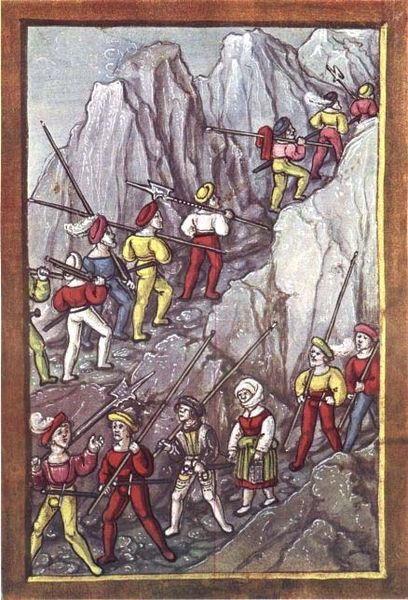
Receiving news from their neighbors that the Austrians were on their way, the Swiss prepared an ambush along one of the routes they knew their enemy would take.
The path below lay squished between a swamp and a steep slope. It was here that the Swiss would strike.
As the Austrians approached, the Swiss began to roll huge boulders down the hill, squashing the Austrians who failed to get out of the way.
Then, shouting at the top of their lungs, the Swiss charged with pikes extended. They smashed through the Austrian forces, winning what would later be known as The Battle of Morgarten.
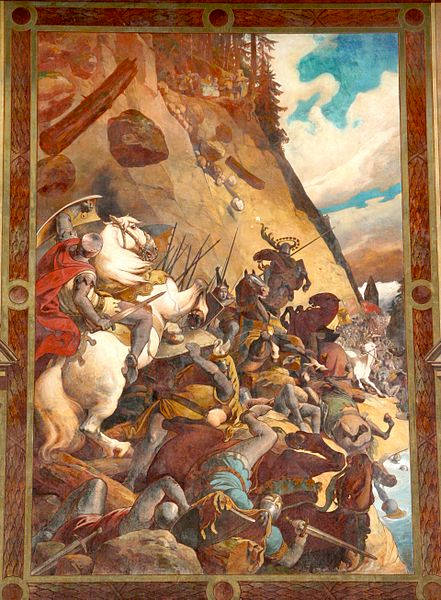
From here, the reputation of the Swiss pikemen began to spread. Several more battles over the years would lead to a refinement of their tactics.
Pikemen Tactics
The Swiss believed in mobility. The faster they could move their troops from Point A to Point B, the better.
They didn’t wear a lot of armor or bring much in the way of artillery with them as a result. Speed was life to them.

When they attacked, they surrounded their perimeter with pikemen.
Each of these pikemen was also equipped with a sword and a dagger. At the center of the Swiss column was a collection of men with halberds and broadswords. In the background, the crossbowmen were used to provide cover fire.
The chief Swiss rules of battle were to charge and kill everyone – no prisoners allowed.
The pikes would be used to break through the enemy lines, and after the Swiss had done so, the swords and daggers would be deployed. Those with halberds and broadswords would then enter the fray.
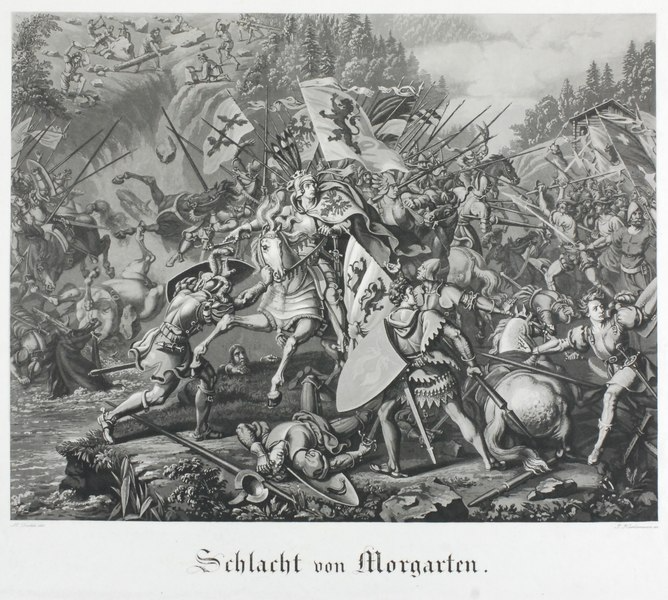
It didn’t matter what they were facing, either. Swiss military doctrine at this time mandated that a soldier always kept moving forward, regardless of obstacles.
Perchance some type of obstacle did mandate a brief lull (e.g., a cavalry charge), the Swiss would rapidly form a “hedgehog formation” in which they formed a box with pikes bristling around the entire perimeter.
Then, after they had killed everyone, they would move on once more.
They became one of the premier fighting forces throughout Europe until the widespread use of gunpowder rendered the pike an ineffective means of warfare.
This is a new style of article for Pew Pew Tactical, if you liked it — let us know in the comments! If you didn’t enjoy it…well phooey. To catch up on previous Pictures from History, click on over to our History Category.

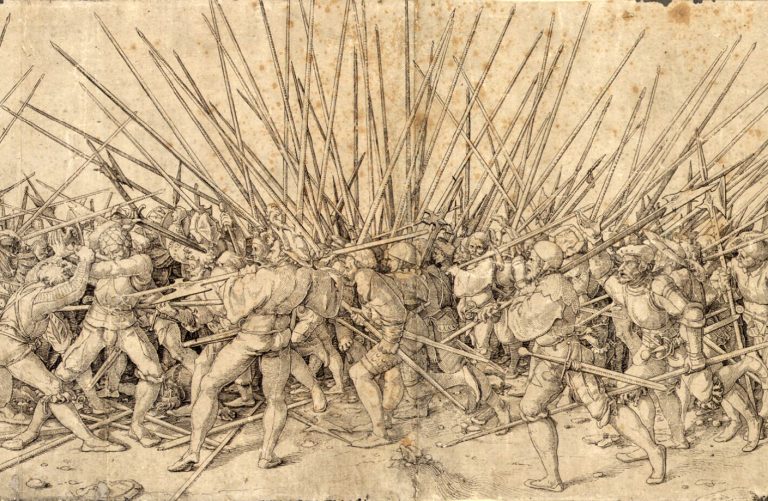
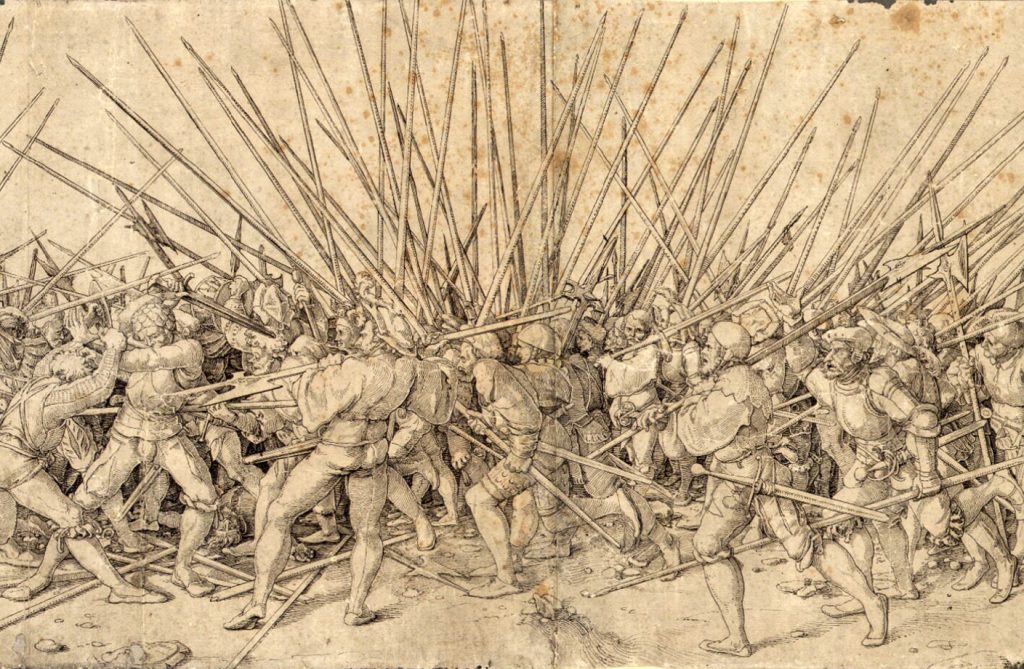







6 Leave a Reply
190 years later, descendants of those Swiss Pikemen marched into Vatican City in 1506, and became the Pope's Swiss Guard carrying pikes just as their ancestors had. Now, the Pikes are strictly ceremonial, but even after the reorganization in 1914, those guards not in command positions, are still called "Pikemen."
Great history nugget Aden.
Great story! Even today the Swiss would be hard to beat. They like to stay neutral but, if you cross the mountains look out bubba! Ever wonder why the Swiss were chosen to guard the Vatican? Just sayin!
What a great story never once heard of the Swiss pike men until today.
Great article. Thank you! (No matter that I'm of Austrian descent.) Please keep these historical articles coming!
Thank you for this article. It's rare for foreigners to take an interest in our history, let alone our military history, and that deserves to be highlighted.
Today, Switzerland is often perceived as a prosperous, peace-loving and neutral country. However, this was not always the case. Switzerland's armed neutrality was imposed by the great European powers, notably at the Congress of Vienna in 1815.
In the final act of the Congress of Vienna, the great powers recognized Switzerland as an independent state and imposed armed neutrality.
At the end of the 18th century, with its mercenary regiments, Switzerland was seen as a force that could unbalance the security of Europe. Napoleon was well aware of this when he pacified the Swiss.
In 1831, Louis-Philippe 1st created the Foreign Legion, based on the Swiss Guard regiments.
Kind regards from Switzerland !
Vlad the Impaler was also fond of the Pike.